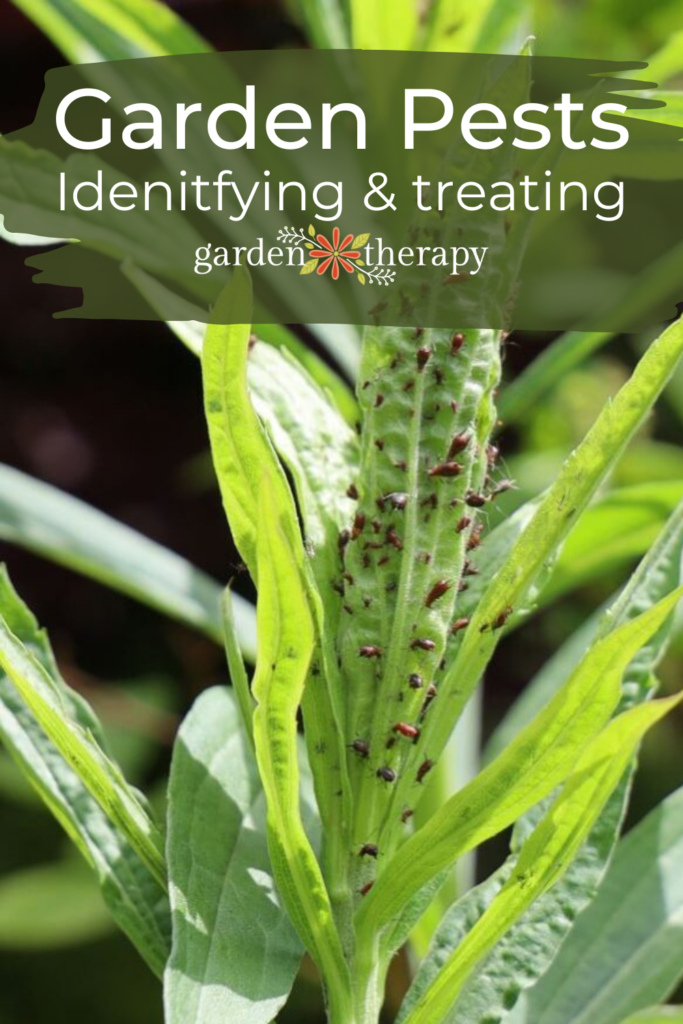Whether you’re a master gardener or it’s your first year growing, garden pests can quickly ruin some of your favourite plants. One minute they’re happily growing in the sun; the next moment, they’re swarded in creepy crawlies. While pests are just part of the natural ecosystem, we still want to keep them away from some of our precious plants. Here are some of the most common pests and natural pest control methods to try out.
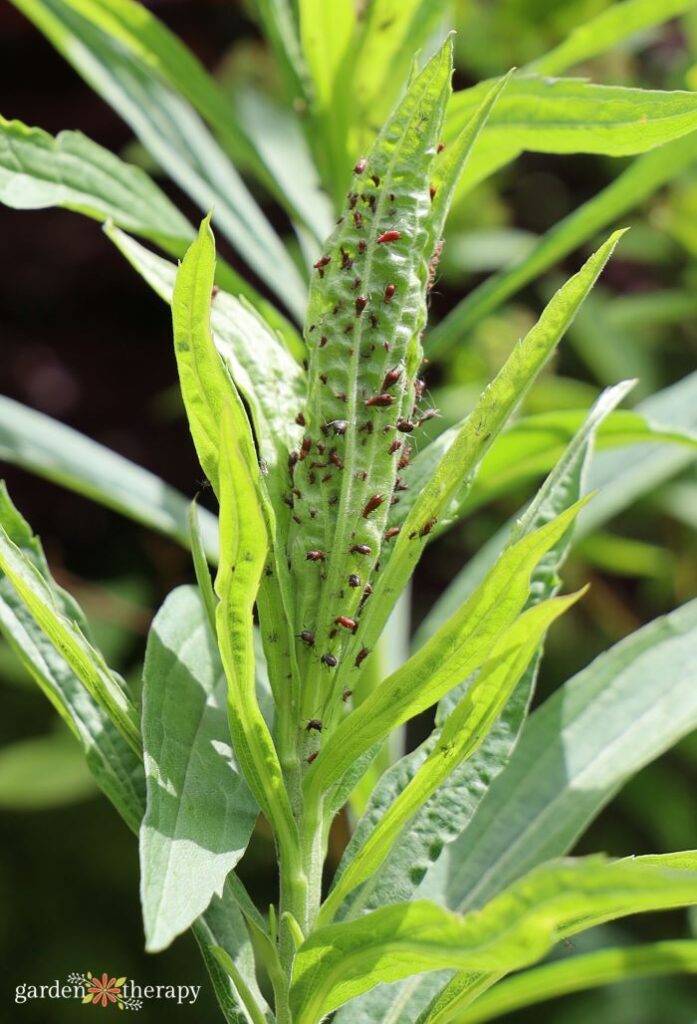
You’ll never catch me with a bottle of pesticide in my hands, no matter how bad those aphids or cabbage caterpillars are. A big part of embracing a regenerative garden is embracing all kinds of wildlife.
Yes, we want the cute butterflies and bees flitting from the flowers, but we also must sometimes accept the slugs and other creepy crawlies.
As a whole, when you practice regenerative gardening practices like crop rotation or interplanting, you will find that your pest problem naturally controls itself. But at times, one pest can take over and become an issue to your most precious plants.
In these cases, I might intervene. But, it’s going to be in a natural, 100% organic method. The second we start using pesticides, we mess with our natural ecosystem and can hurt the beneficial bugs too.
Here are some of the most common pests I encounter inside the home on my houseplants and outside the home in my garden, and how to prevent and stop them from Trojan horsing your garden.
This post will cover…
- A Note on Good Bugs
- Common Garden Pests
- Ants
- Aphids
- Cats
- European Chafer Beetle
- Fruit flies
- Fungus Gnats
- Mosquitoes
- Slugs
- Snails
- Root and Vine Weevils
- Ticks
- Wasps
- Whiteflies
- Wireworms
- Other Animals
- Frequently Asked Questions About Garden Pests
- More Tips for Wildlife in the Garden

A Note on Good Bugs
Some of those creepy crawlies may actually be doing more good in your garden than you think! For instance, ants love to farm aphids. So while they may be marching one by one, they’re helping to protect your plants from a more harmful bug.
While some bugs can give you the ick and may not be as cute as a dotted red and black ladybug, I encourage you to take a moment to research the pest before getting concerned and go all terminator on it.
Most of these garden pests are just part of the natural predator-prey cycle and are crucial food to other more beneficial bugs and wildlife!

Common Garden Pests
These are some of the most common garden pests that could be chowing down on your vegetables, flowers, and lawn.
Ants
As I mentioned above, ants are a beneficial bug to have in the garden. We see them all over the place, on the hunt for food. I love spotting an ant with a huge load on its back, and marvel at their tiny bodies’ sheer strength.
Sometimes, you can find an overload of ants in one area. Depending on where it is, the ants might be an issue in the garden. The best way to handle this is to redirect the ants. One ant discovered a food source in the area and told everyone else in their colony about it, so now they’re all heading to and fro.
To redirect them, you want to remove that food source and try to keep as tidy of a yard as possible in that area. Don’t invite them to the picnic!
For more ant natural pest control tips, see my dedicated post on how to get rid of ants in the garden.
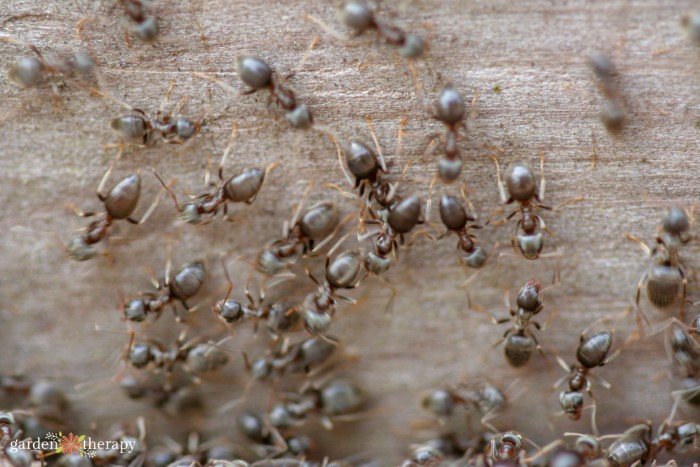
Aphids
One of the biggest garden pests are aphids. They’re quick to multiply and get their sticky honeydew all over your plants. Luckily, they’re also a favourite for other bugs to munch on, like ladybugs or lacewing larvae.
I have two preferred ways to handle insects in the garden. The first is to attract those beneficial bugs by planting plants they like, building bug hotels, and implementing practices like leaving the leaves.
The second way I like to handle them is by purposefully attracting them. Yes, you heard me right. You can plant trap plants like nasturtium to lure aphids away from your other plants purposefully. This also encourages the beneficial insects to swoop in and eat them.
For more tips on getting rid of aphids, check out my aphid guide.
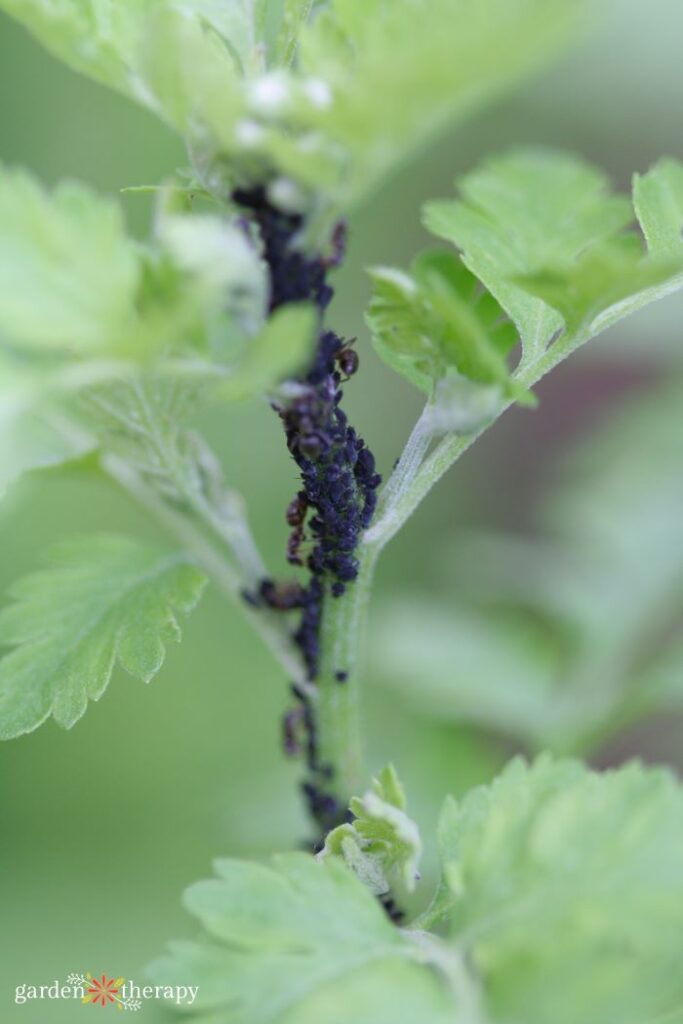
Cats
For some, cats can be a pest. Personally, I’m a cat mom to a mischievous black cat known as Magic, who has quickly become one of my favourite garden companions.
But I also know that some gardeners like to keep neighbourhood cats out of their garden, whether they don’t like the cats using their garden bed as a litter box or to protect the songbirds.
One of the best ways to keep cats out is by covering your gardens with pokey items so it’s less desirable to hang out in, making the garden inaccessible, and scaring them away with water.
Here are all my more in-depth tips for keeping cats out of the yard naturally.
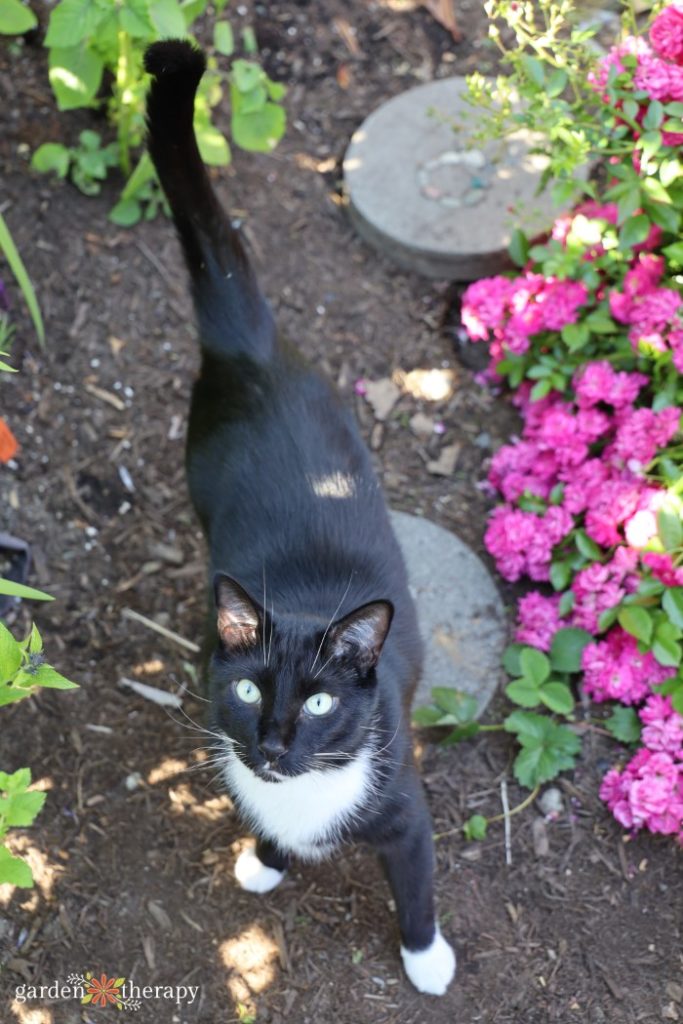
European Chafer Beetle
The chafer beetle is known for feasting on lawns. These beetles mate in the trees and lay up to 50 eggs in the lawn beneath them. The eggs turn into grub that then feast on the lawn…until all the birds and small animals gobble them up.
While you could go through plenty of effort to get a perfectly green lawn, I don’t think it’s worth the effort. I don’t try to hide the fact that I don’t like turf grass as they suck up space and water.
Instead, I encourage folks to seek an alternative to grass. I like my lawns full of clover, speedwell, and moss, and the chafer beetle doesn’t do nearly as much damage to it.
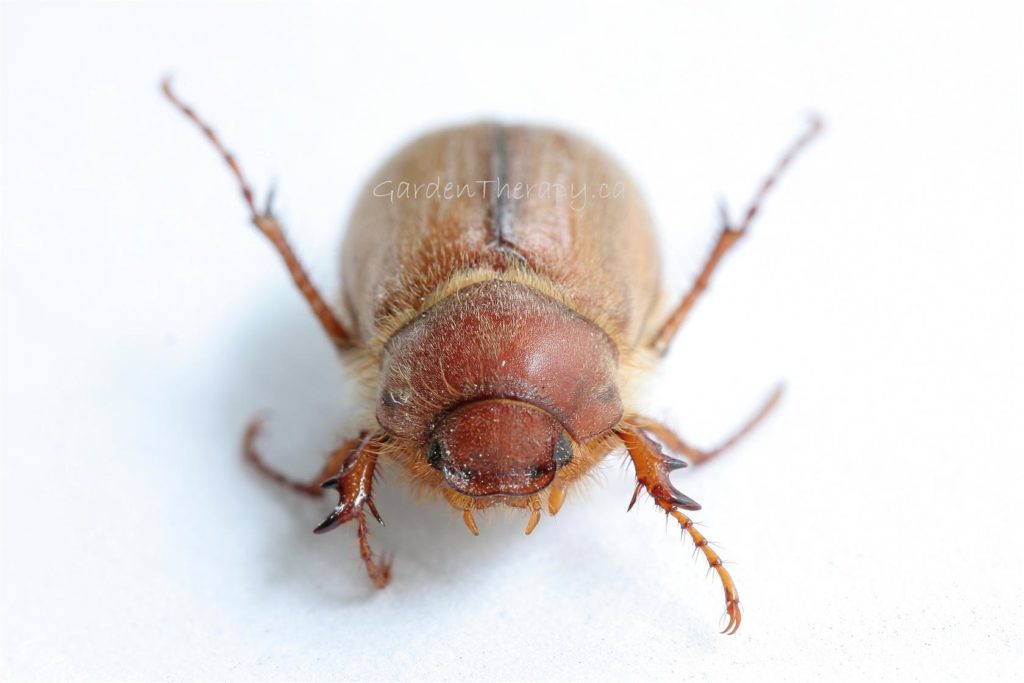
Fruit flies
When you spot one fruit fly, you know there are going to be plenty more to follow. Fruit flies often arrive via your produce or can even slip in from the outdoors. They’re attracted to ripe and rotting produce and can smell their favourite scents from over a mile away.
Prevention is always best for fruit flies by not letting your produce get too ripe. But of course, there’s always a banana or two that doesn’t get eaten in time.
The best way to handle fruit flies once you have them is to make a trap. Luckily, it’s super easy to do and doesn’t require any fancy items you don’t already have in your home. Follow the steps in this post to make a trap yourself.
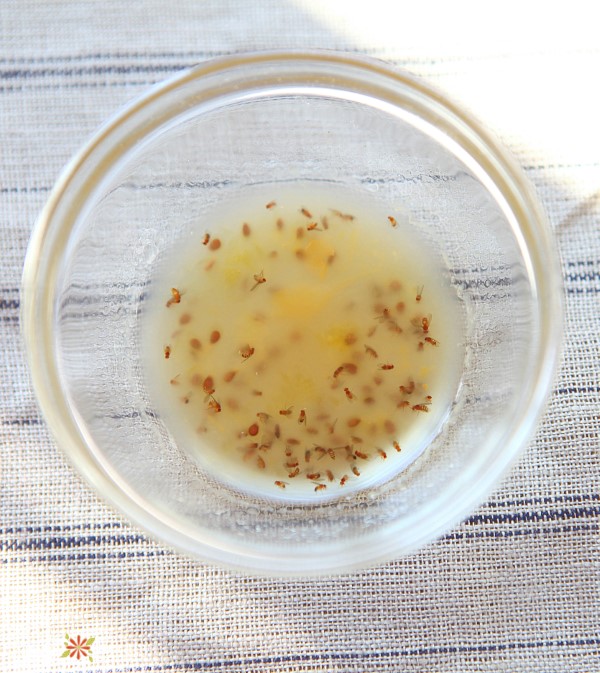
Fungus Gnats
I’ve been sitting on the couch before, just minding my own business, when a tiny speck flies into my face. Or worse, I watered my plant only to have a wave of fungus gnats erupt. These little buggers typically aren’t harmful, but they sure are annoying, especially once in the house.
Fungus gnats are attracted to moist soil and can remain dormant in potting soil until the right conditions appear. So the best way to combat them is by controlling your water. Avoid overwatering, allowing the plant to fully dry before you water it again.
You can also use sand or gravel to top your soil to keep the fungus gnats from laying their eggs. To learn more about stopping and preventing fungus gnats, check out this post.
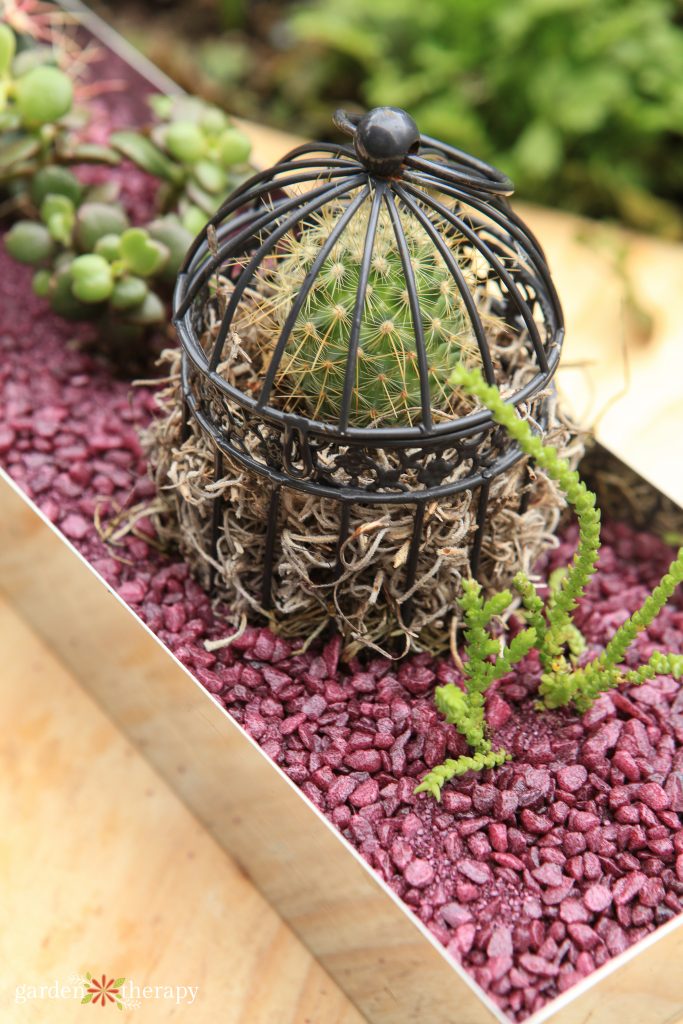
Mosquitoes
Mosquitoes LOVE me. The feeling, however, is not mutual. I’m one of those unlucky people who mosquitoes love to feast on, and I get such huge, itchy swellings from their bites. As a gardener and avid camper, I’ve had to figure out quite a few ways to keep them away.
One of my go-to natural pest control methods in the garden is making a mosquito repellent container garden. I fill it with heavily scented plants and place it near my patio so I can relax outside without them bugging me. I also combine these efforts with homemade citronella candles.
When I’m out in the garden or camping, I make my own natural bug spray. It smells way better than any commercial spray and doesn’t contain any deet. But it works wonders at keeping the annoying mosquitoes away!
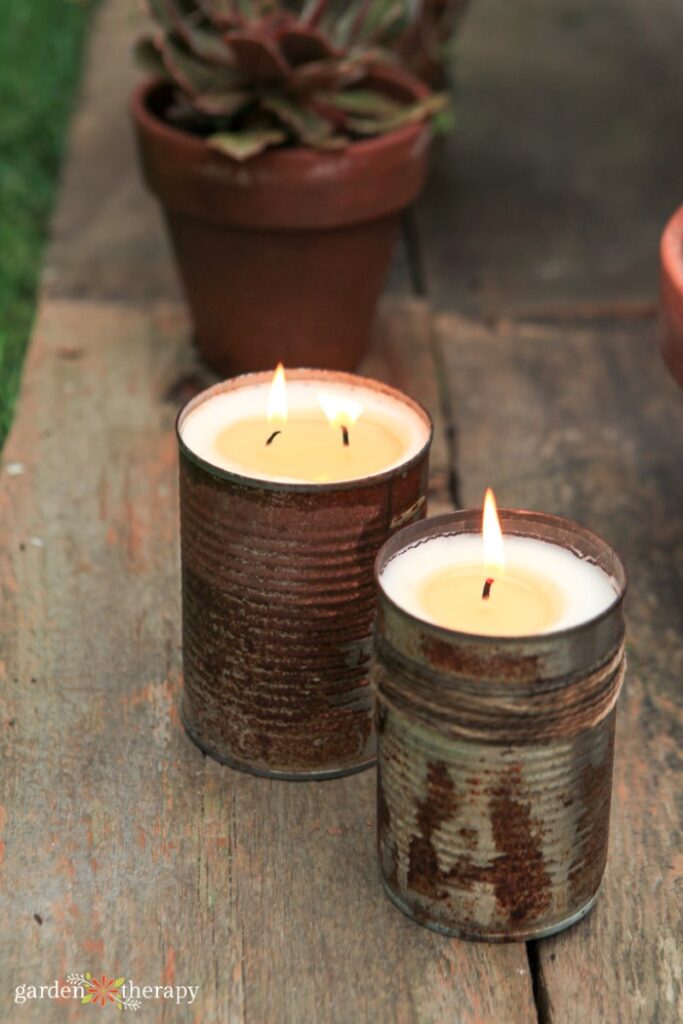
Slugs
Boy, I have had my troubles with slugs. These buggers are absolute fiends when it comes to feasting on my tender lettuce garden. They’re one of the main reasons I grow my lettuce in containers and raised beds so they’re less likely to reach it.
Slugs love moist conditions, so the best way to get rid of them is by drying things up and making their environment less hospitable to them.
You can also make an easy slug trap with beer or handpick the slugs. For many more ways to get rid of and prevent slugs, read this post.
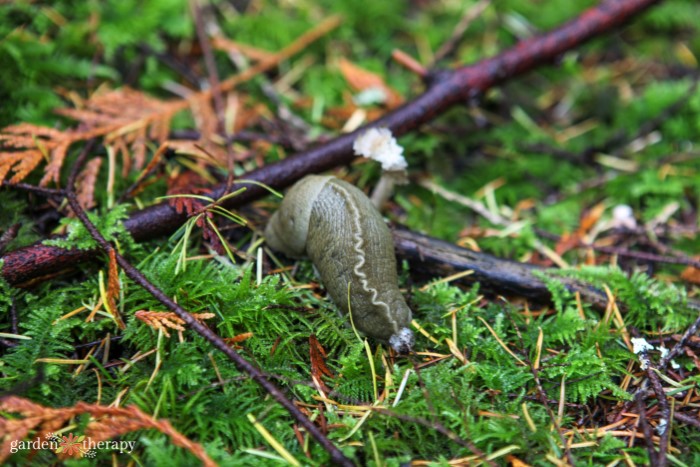
Snails
Snails are the arguably cuter version of slugs with their cute, intricate shells. In most cases, snails aren’t a huge problem, and I welcome them in my garden. But sometimes, I catch them eating seedlings and low-hanging fruit like tomatoes or strawberries.
You can treat them very similarly to slugs, decreasing watering, setting a trap, and keeping your garden tidy by removing low-hanging branches.
For more on snails, read this post on whether or not snails are friends or foes.
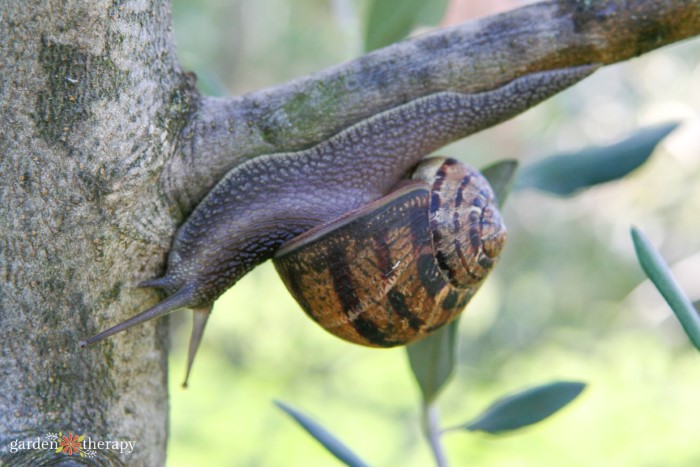
Root and Vine Weevils
Strawberries are a tricky plant to grow right in the garden as they’re very susceptible to garden pests and other wildlife munching them all before you get to them. This is a big reason why I like to grow them in containers like hanging baskets!
One year I found my strawberries to be a little more lacklustre than usual, and after doing some digging, I found strawberry root weevil grubs in the soil. Luckily, I had them in a container, so I was able to shake out the roots, pick out the grubs, and feed them to the birds.
Unfortunately, getting rid of these grubs is pretty manual, so it’s best to prevent them by checking the soil before you begin planting. If you do find them, pick the grubs out, wash your roots, and put them in new soil.
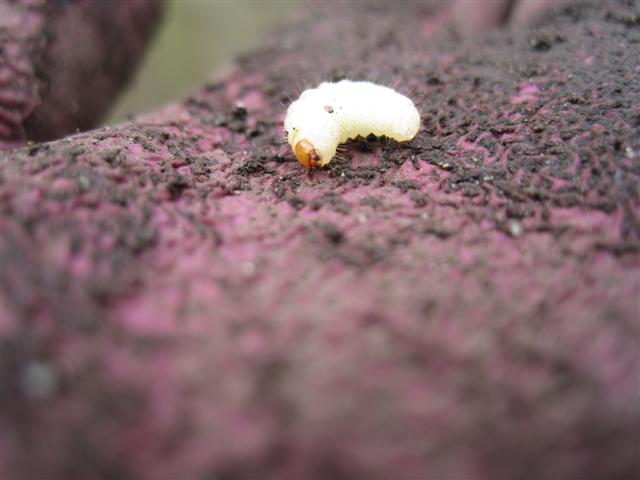
Ticks
Ticks aren’t usually a big pest for your garden plants, but they’re a pest for gardeners. And one we should take seriously! I once thought ticks were only out in the woods, but our gardens and urban grassy areas are other places where ticks will live happily.
Ticks can cause Lyme disease, a multisystem inflammatory disease that can affect the joints, heart, and nervous system.
After spending time outside gardening, it’s important to do a tick check. Learn more about how to do a tick check and what to do if you spot a tick.
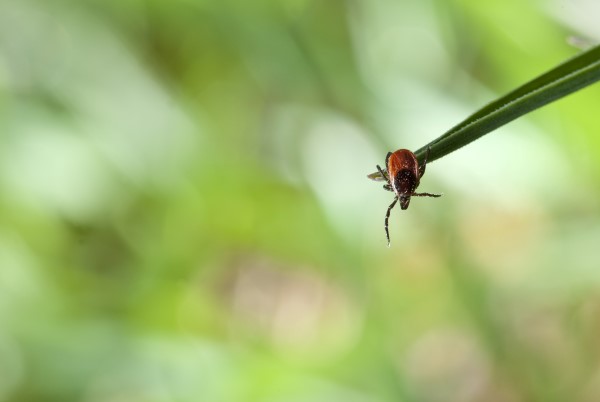
Wasps
It’s hard to be on team wasp. These are some of the most annoying—and hurtful—garden pests out there for us humans. A wasp sting or bite while gardening or simply enjoying a cocktail on the patio can quickly ruin an afternoon.
However, I must point out that wasps are also very important pollinators. It’s just hard to like them as much as a cute and harmless bee!
If you have some nasty territorial wasps in your garden, I highly recommend making this DIY wasp trap out of an old plastic bottle.

Whiteflies
It’s pretty easy to know when you have whiteflies. They make their presence known! When disturbed, these tiny white moth-like insects will flutter around your plant and leave behind honeydew and white powder.
Whiteflies can suck out the juices from leaves and flowers, causing serious damage if left untreated. They can be difficult to eliminate, but it’s not impossible. Consistently treating the leaves with neem oil or soap and water are the best ways to get rid of them.
For more tips on natural pest control methods for whiteflies, check out my whitefly guide.
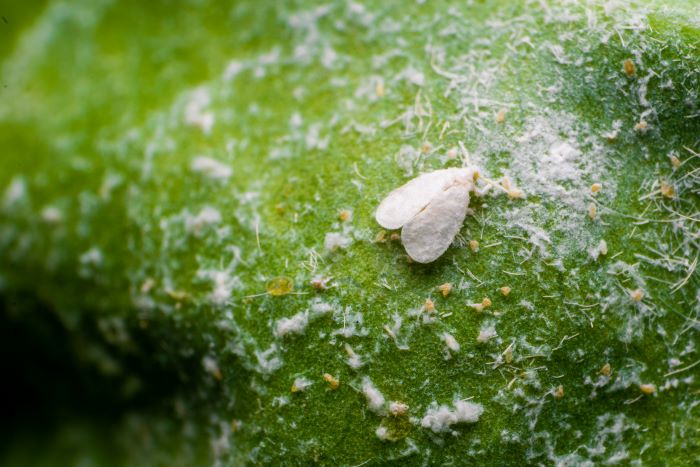
Wireworms
Wireworms are click beetle larvae that love to feast on vegetable crops and are found in the soil. Compared to maggots and other grubs, they have a darker copper colour and a hard body.
I once had wireworms that killed some of my lettuce and tomato transplants. Little did I know that wireworms were waiting for these tender seedlings to attack. I was unable to save them, but if I had put out my wireworm trap earlier in the season, it would have worked.
Wireworm traps aren’t what you expect! I actually use a potato as bait to lure them in so I can pick them off one by one. Here’s how you can set up your own wireworm potato trap.
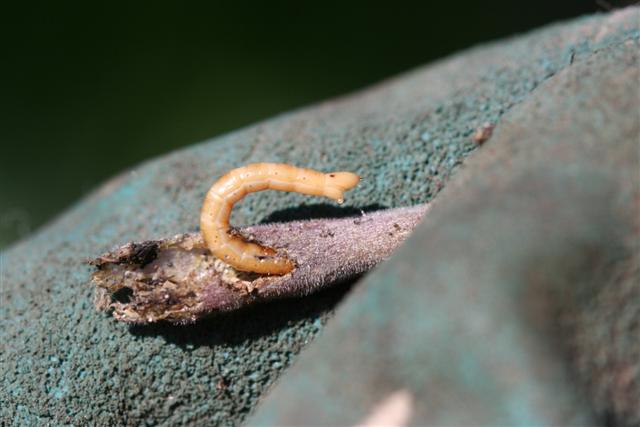
Other Animals
When it comes to animals like skunks, raccoons, rats, mice, and other small animals taking over your garden, I use many of the same methods for keeping them out of the garden. This can include removing what’s attracting them to the garden, scaring them with water, covering the soil, and more. You can read more about those tips in this post.

Frequently Asked Questions About Garden Pests
Companion planting is when you plant specific plants that pests don’t like among the ones they do. It’s one of the best ways to naturally prevent garden pests from coming into your vegetable or flower garden.
Different flowers work for different pests, but some of my all-around favourites include borage, nasturtium, marigolds, chrysanthemum, and petunias.
This will vary mainly depending on where you live. In the pacific northwest, we see many aphids, whiteflies, slugs, cabbage worms, tomato hornworms, squash bugs, mealybugs, and scale.
If you suspect that a pest may be causing problems with your plant, thoroughly go over your plant for signs. This can include the pests themselves, eggs, honeydew, and other waste from the pests. Be sure to check under leaves and at the nodes, as certain pests like to hang out in different areas.
If you don’t see them on the plant, check the soil. Dig around to see if any larvae or grubs are the problem. Once you spot them or find signs of them, it can help you in your research to figure out which pest is which.
For common houseplant pests, check out this post.
Besides companion planting, I use a DIY natural pest control spray to keep pests away from my vegetables. Rather than aim to kill, it deters pests and encourages them to find a home or meal elsewhere.
The pest is made using liquid castile soap and specific herbs that work for each different pest. See how you can make your own natural pest control spray!
Because of the strong acidic smell, many pests don’t like vinegar. However, it can damage plants and grass if you spray it directly on the plants. This is why many people dilute the vinegar, but still be cautious if you decide to use vinegar as garden pest control.

Got any more questions about the pests in your garden? Leave them in the comments below, and I’ll do my best to get back to you as soon as I can!

